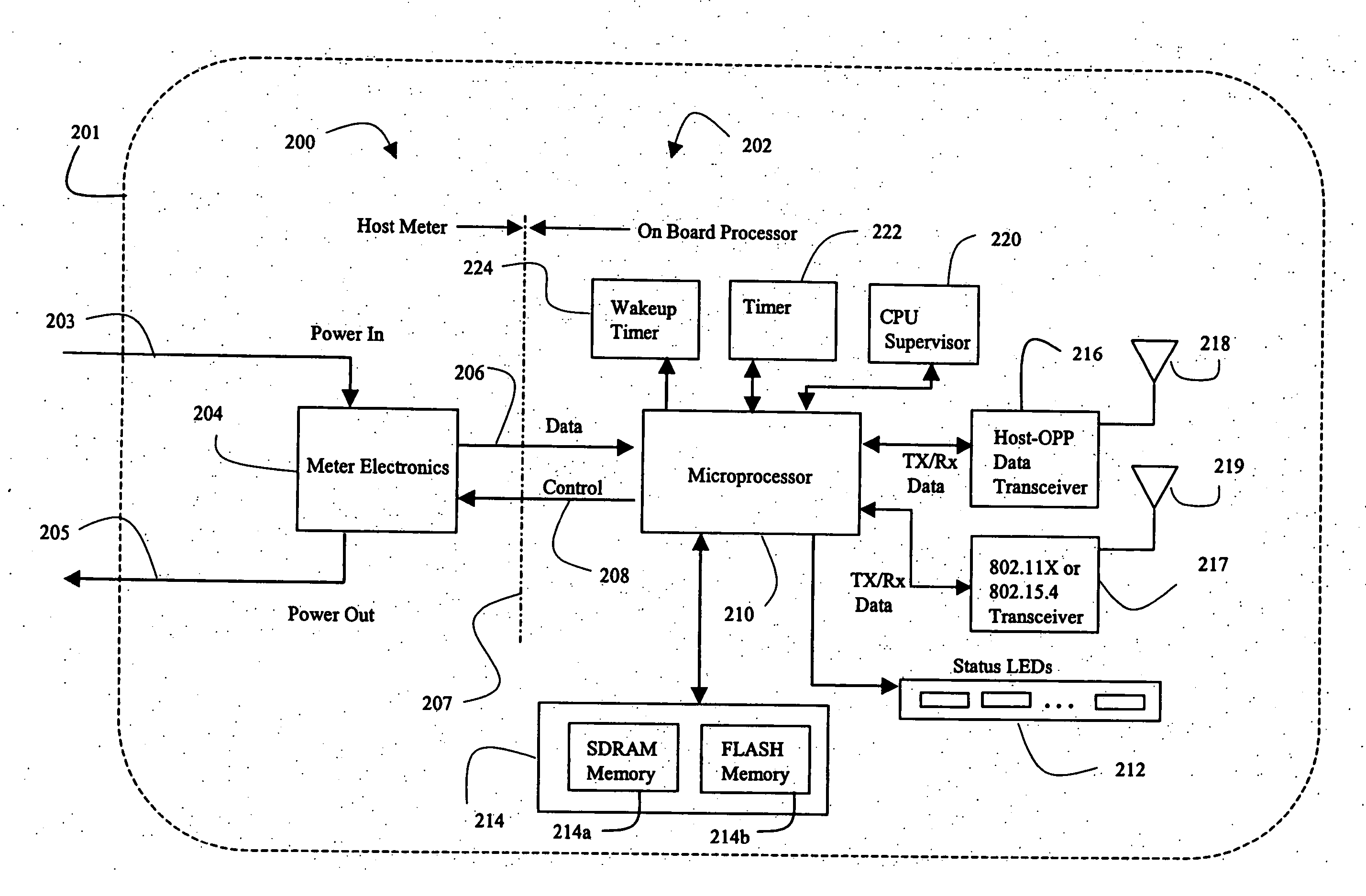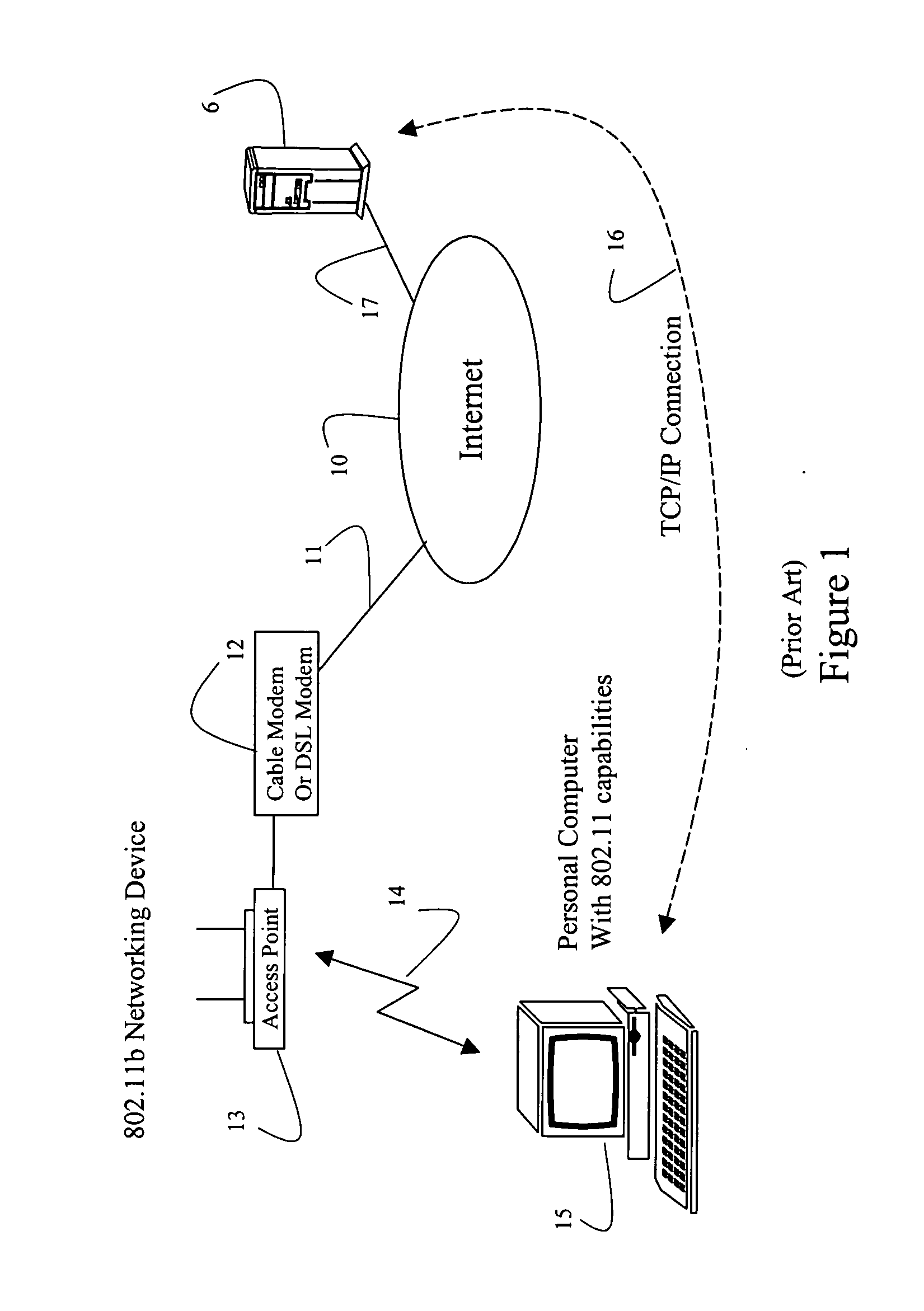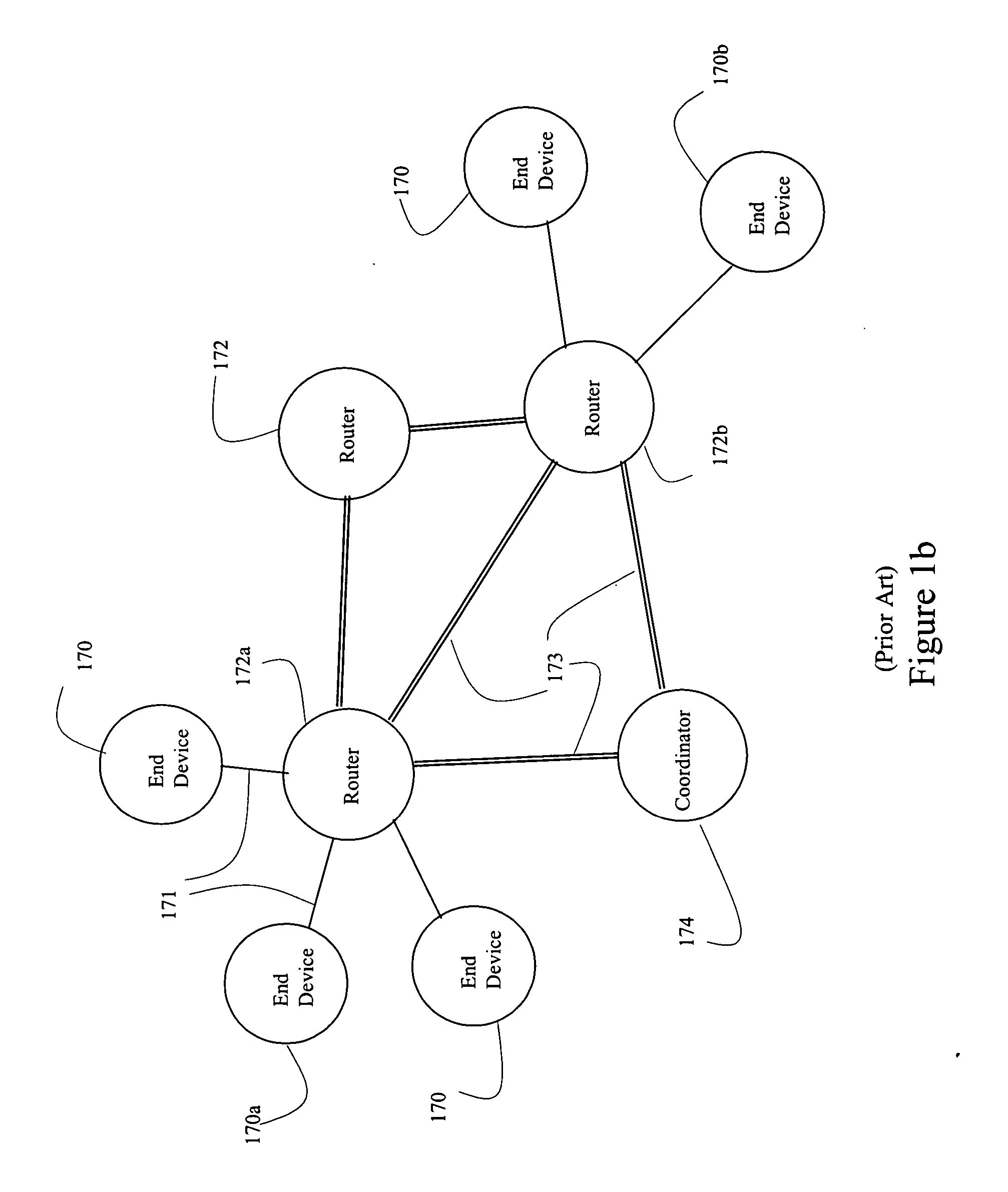Systems and methods for remote power management using IEEE 802 based wireless communication links
- Summary
- Abstract
- Description
- Claims
- Application Information
AI Technical Summary
Benefits of technology
Problems solved by technology
Method used
Image
Examples
Embodiment Construction
The present invention is directed, in part, to remote energy load management, including power load control, real time load curtailment verification, meter activation / deactivation, and meter reading. Although the principles of the present invention are largely illustrated using a power meter and load control device, the principles equally apply to other embodiments of resource management. For example, in lieu of a power load and power meter, a natural gas flow controlled by a valve or gas meter could be used. Other examples include devices controlling resources in the form of fluids, solids, and the corresponding devices for metering or handling such fuel resources as coal, oil, gasoline, diesel fuel, kerosene, etc. A variety of measured resources controlled by a metering device may be adapted to the principles of the present invention. Thus, illustrating the principles by using a power meter should not be construed to limit application of principles of present invention solely to s...
PUM
 Login to View More
Login to View More Abstract
Description
Claims
Application Information
 Login to View More
Login to View More - R&D
- Intellectual Property
- Life Sciences
- Materials
- Tech Scout
- Unparalleled Data Quality
- Higher Quality Content
- 60% Fewer Hallucinations
Browse by: Latest US Patents, China's latest patents, Technical Efficacy Thesaurus, Application Domain, Technology Topic, Popular Technical Reports.
© 2025 PatSnap. All rights reserved.Legal|Privacy policy|Modern Slavery Act Transparency Statement|Sitemap|About US| Contact US: help@patsnap.com



